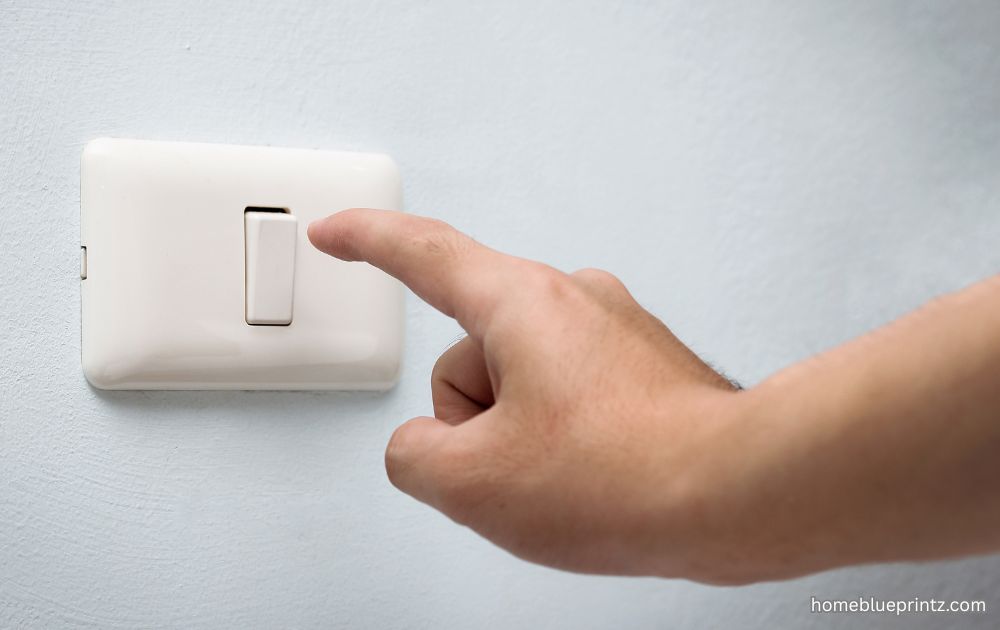Have you ever wondered how a single switch can control multiple functions with just a flick? That’s the magic of the On-Off-On switch a small yet powerful component that manages electrical flow efficiently. Whether it’s in your car, a home appliance, or a DIY circuit, this versatile switch plays a key role in controlling electrical power safely.
How an On-Off-On Switch Works
An On-Off-On switch functions by allowing electrical current to flow through two different circuits using a single control. It has three positions—two “On” states and one “Off” state in the middle. When toggled to either “On” position, it connects the power to one of the outputs, and when in the “Off” position, it breaks the circuit entirely. This design provides flexibility in controlling multiple devices or functions without needing separate switches.
Types of On-Off-On Switches
There are several types of On-Off-On switches, each designed for specific applications and user preferences. The main types include:
- Toggle Switch: Features a lever that flips up and down for manual control.
- Rocker Switch: Operates with a smooth rocking motion, common in appliances.
- Slide Switch: Moves horizontally and is often found in small electronics.
- Push-Button Switch: Compact and ideal for devices requiring quick activation.
Single Pole vs. Double Pole
The difference between Single Pole and Double Pole switches lies in how many circuits they can control. A single pole switch manages one circuit, while a double pole switch can handle two circuits at the same time, making it ideal for more complex systems.
- SPDT (Single Pole Double Throw): Controls one circuit with two possible outputs.
- DPDT (Double Pole Double Throw): Controls two circuits independently within one switch.
Applications of On-Off-On Switches
The On-Off-On switch is widely used in various fields due to its versatility and ease of control. It can manage multiple circuits, making it ideal for both simple and complex electrical setups.
- Home appliances: Lamps, fans, and lighting systems.
- Automotive: Headlights, wipers, and dashboard controls.
- Industrial use: Machinery and control panels.
- DIY electronics: Robotics and creative projects.
Advantages of Using On-Off-On Switches
The On-Off-On switch offers several practical advantages that make it a popular choice in various applications. It provides efficient control, saves space, and enhances safety in electrical systems.
- Versatility: Allows control of multiple circuits with one switch.
- Space-Saving: Reduces the need for separate switches.
- Durability: Designed to handle frequent use and electrical loads.
- Safety: Ensures proper direction and isolation of current flow.
How to Wire an On-Off-On Switch
Wiring an On-Off-On switch is a simple process that requires careful attention to the terminal layout. Begin by identifying the common (COM) terminal and the two output terminals, usually labeled A and B. Connect the power source wire to the COM terminal, then attach the output wires to A and B based on your circuit design. Once the connections are secure, test the switch to ensure it toggles correctly between both “On” positions and the “Off” position in the middle. Always disconnect the power before working to ensure safety.
Common Problems and Troubleshooting
Common issues with On-Off-On switches often involve poor connections, worn contacts, or internal dust buildup. If the switch fails to respond or flickers, it’s usually due to loose wiring or corroded terminals. Cleaning the contacts and tightening connections can often restore normal operation. In some cases, replacing damaged components or checking the power source may be necessary to ensure consistent performance. Regular inspection helps prevent most of these problems before they affect functionality.
On-Off-On Switch vs. Other Switch Types
The On-Off-On switch stands out for its flexibility and ability to control two circuits with a single device. Unlike other switches, it provides multiple operational states, making it suitable for complex applications where versatility is key.
- Offers dual circuit control in one unit.
- Easier to operate than rotary or momentary switches.
- Ideal for systems requiring two output options.
Choosing the Right On-Off-On Switch
Choosing the right On-Off-On switch depends on your specific application and the environment it will be used in. It’s essential to match the switch’s electrical and physical features with your system requirements for safe and efficient performance.
- Voltage Rating: Ensure the switch supports your circuit’s voltage.
- Current Capacity: Choose a model that can handle the electrical load.
- Material Quality: Opt for durable materials like metal or high-grade plastic.
Maintenance Tips
Keeping your On-Off-On switch in good condition ensures longer life and reliable performance. Simple maintenance can prevent malfunctions and improve efficiency.
- Clean Contacts: Use a soft brush or compressed air to remove dust and debris.
- Avoid Moisture: Keep the switch dry to prevent corrosion.
- Tighten Connections: Regularly check and secure any loose terminals.
Environmental Impact
The environmental impact of modern On-Off-On switches is becoming increasingly positive as manufacturers adopt sustainable practices. Many switches are now produced using recyclable materials and energy-efficient designs that help reduce waste. These eco-friendly components also consume less power, supporting greener electrical systems. By focusing on durability and responsible sourcing, companies ensure that switches last longer and have a smaller carbon footprint overall.
Safety Standards and Certifications
Safety standards and certifications ensure that On-Off-On switches meet strict quality and performance requirements. Products marked with certifications like UL, CE, or RoHS guarantee that they have been tested for safety, durability, and environmental compliance. These certifications protect users from electrical hazards and ensure reliable operation under various conditions. Choosing certified switches not only enhances safety but also reflects a commitment to quality and responsible manufacturing.
Conclusion
The On-Off-On switch may seem like a small component, but its impact is enormous. From home gadgets to industrial machines, it ensures smooth and safe operation. By understanding its structure, uses, and maintenance, you can make smarter choices in your electrical setups and projects.
FAQs about on off on switch
- What does On-Off-On mean?
It refers to a switch with two “On” positions and one “Off” position in the middle, allowing control of two different outputs. - Can I use an On-Off-On switch in my car?
Yes, it’s commonly used in cars for lights, accessories, and other electronic systems. - Is wiring an On-Off-On switch difficult?
Not at all. With basic electrical knowledge, you can wire it safely by following standard steps. - How do I know if my switch is SPDT or DPDT?
Count the terminals three for SPDT and six for DPDT. - Are On-Off-On switches expensive?
They’re affordable and widely available in different designs and sizes to fit every need.










